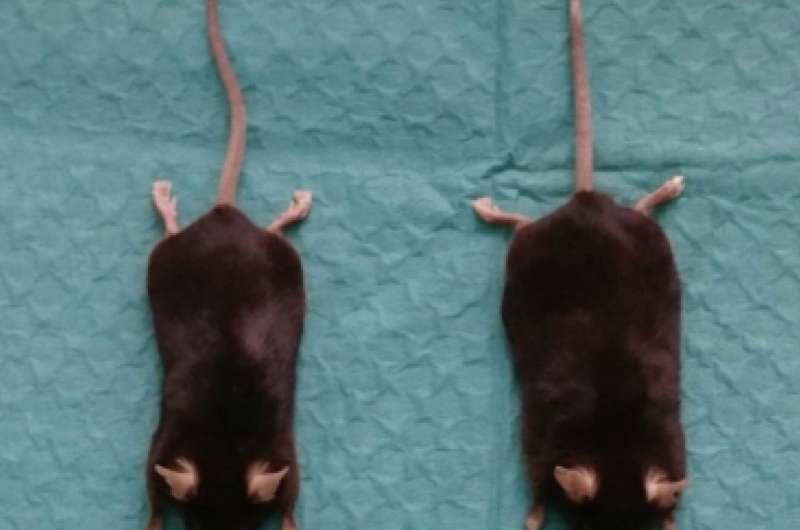Representative photograph of 14 month-old female mice of both genotypes. Credit: Reimúndez et al., JNeurosci (2018)
Reduced ability to maintain body temperature in colder environments may contribute to the development of obesity in adulthood, suggests a new study in mice published in JNeurosci.
Energy from food fuels maintenance of a constant body temperature by generating and conserving heat. Nearly half of the human energy budget spent during a sedentary life is used to maintain a body temperature of about 37 degrees Celsius (98.6 degrees Fahrenheit).
Rosa Señarís and colleagues from the University of Santiago de Compostela and the Institute of Neuroscience/University Miguel Hernandez of Alicante (Spain) found that, in a mildly cold environment, mice lacking the cold-sensing ion channel TRPM8 consumed more food during the day, when mice are usually asleep. The increased daytime eating started at a young age and led to obesity and high blood sugar in adulthood, which may have been caused in part by reduced fat utilization.
Compared to control animals, the TRPM8-deficient mice lost more body heat in mild cold, particularly during periods of fasting when their body temperature dropped below 30 degrees Celsius (86 degrees Fahrenheit). The research represents a previously unrecognized link between thermal sensing systems, thermoregulation and food intake, which may open up new avenues for preventing and treating obesity.
Video recording of IR thermography of a WT (left) and a TRPM8-deficient mouse (KO, right) during 6.45 hours of the light phase, starting at the lights-on time (0 ZT). Credit: Reimúndez et al., JNeurosci (2018)
More information: Deletion of the cold thermoreceptor TRPM8 increases heat loss and food intake leading to reduced body temperature and obesity in mice, JNeurosci (2018). DOI: 10.1523/JNEUROSCI.3002-17.2018
Journal information: Journal of Neuroscience
Provided by Society for Neuroscience




















